In the ever-evolving realm of fitness, one-on-one instruction has emerged as a powerful tool for achieving personalized results. This is particularly true for the practice of Pilates—a holistic exercise method that emphasizes core strength, flexibility, and mindful movement. As experienced Pilates instructors, we recognize the transformative potential of private Pilates sessions. In a world where group fitness classes often take center stage, we're here to shed light on the six compelling reasons why private Pilates sessions stand out as an exceptional choice for those seeking a tailored approach to wellness.

-
6 Reasons Private Pilates Sessions Work!

CLICK HERE TO READ THE FULL ARTICLE »
-
These 19 Benefits of Pilates Will Inspire You to Fire Up Your Core

In a world where wellness trends come and go, one practice has stood the test of time—Pilates. The fitness landscape has evolved over the years, but Pilates has remained a steadfast favorite, with its roots dating back to the early 20th century. Pilates isn't just another workout fad; it's a holistic approach to strengthening your body and mind. As experienced Pilates instructors, we understand the challenges and rewards that this practice brings. So, let's dive into the myriad benefits of Pilates that will undoubtedly inspire you to ignite your core and embark on a journey toward better health.
CLICK HERE TO READ THE FULL ARTICLE »
-
Unlock Your Health Potential: Why You Shouldn’t DIY Your Pilates Practice
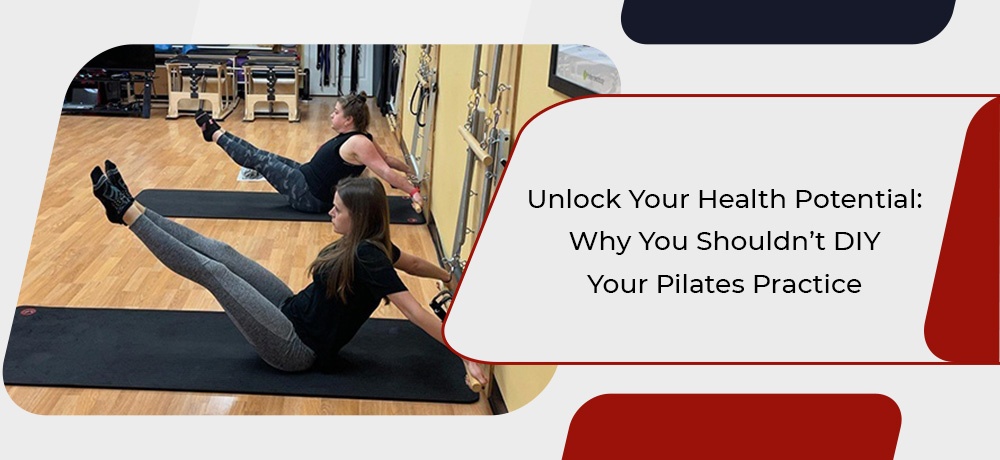
Are you someone who values health and wellness, understanding that it is essential to find a movement modality that can support your lifelong well-being? If you’re located in Cherry Hill, Camden County, Burlington County, Trenton, Princeton, Lakewood, Toms River, New Jersey, Newark, Wilmington, New Castle, Delaware, Philadelphia, King of Prussia, Pennsylvania, or the surrounding areas, we have some valuable insights to share with you. In today’s blog, we’ll explore the reasons why you shouldn’t embark on a DIY (Do-It-Yourself) journey when it comes to starting your Pilates practice. We’ll delve into the potential safety hazards, the importance of professional guidance, and how our team at Pilates Core Center can help you overcome any challenges you may face. So, let’s dive in and discover the incredible benefits of partnering with a certified Pilates instructor.
CLICK HERE TO READ THE FULL ARTICLE »
-
The benefits of CoreAlign classes: How it can improve posture, balance, and overall fitness

Are you looking for a fun and unique way to improve your overall fitness? CoreAlign® classes may be just what you need. Developed by physical therapist Jonathan Hoffman, CoreAlign® exercises are designed to improve posture, balance, and functional movement, making it an excellent choice for those recovering from injury or looking to enhance their athletic performance.
CLICK HERE TO READ THE FULL ARTICLE »
-
The advantage of private Pilates sessions: Why it's worth the investment.

Are you a fan of Pilates? If you are, you probably know that Pilates is a fantastic exercise regimen that can improve your overall health and fitness. While group Pilates classes are a great way to get started, did you know that private Pilates sessions offer several unique benefits that are worth the investment? Whether you're recovering from an injury or surgery, or you have specific training needs for a particular sport, private Pilates sessions can help you achieve your goals more quickly and safely.
In this blog, Pilates Core Center will help you take a closer look at why private Pilates sessions are so valuable. We'll explore how working one-on-one with a certified instructor can help you achieve your fitness goals more efficiently and effectively. From personalized attention to customized workout plans and specialized equipment, we'll cover everything you need to know about private Pilates sessions. Let's dive in and explore the advantages of private Pilates sessions!
CLICK HERE TO READ THE FULL ARTICLE »
-
The Benefits of Balanced Body Teacher Training: Why It's Important for Overall Health and Fitness

Are you interested in becoming a Pilates instructor in Cherry Hill? Or maybe you're looking to deepen your understanding of the Pilates method for your own personal practice. Whatever your goals may be, Balanced Body Teacher Training can be a valuable investment in your health and fitness journey.
In this blog post, we'll explore five key benefits of Balanced Body Teacher Training as offered by Pilates Core Center in Cherry Hill.
CLICK HERE TO READ THE FULL ARTICLE »
-
How To Practice Pilates In A Boutique Studio On A Budget

Nothing is more important to health and well-being than movement, and Pilates, led by knowledgeable teachers, is the best value. Pilates incorporates low-impact movement with resistance for a full-body workout suitable for anyone, regardless of body type and experience level.
CLICK HERE TO READ THE FULL ARTICLE »
-
Employee Spotlight: Casey Van Newenhizen
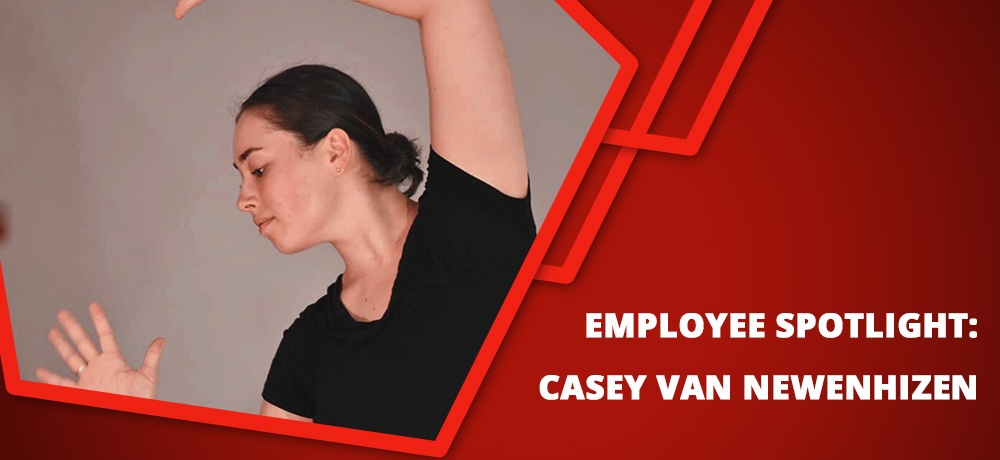
Meet Casey Van Newenhizen, Master Pilates Instructor at Pilates Core Center. Casey joined us three years ago and has a bright future ahead.
It’s tough to put into words Casey’s importance, but the reason we’re featuring her on our blog this month is to showcase our appreciation for her efforts. Casey has quite a reputation amongst employees who know her as well as among our clients.
CLICK HERE TO READ THE FULL ARTICLE »
-
Kiss your Brain The benefits of physical activity (Pilates) and brain health : Kamara Bivens

Research shows that there are many benefits of physical activity. Some of those benefits include improving cognitive health and strengthening muscles and bones. Neurological disorders affect the brain and nerves found throughout the body. Neurological disorders can also affect the spinal cord, resulting in symptoms such as weakness and muscle imbalances. Some examples of these conditions include Stroke, Parkinson, and Multiple Sclerosis.
Pilates for Neurological disorders or Neuro Pilates is an excellent low-impact exercise for those with Neurological conditions. This practice implements Pilates-based exercises that can help improve issues with gait, balance, tremors, flexibility, grip strength, and motor coordination. In Pilates, we are taught to embrace the mind and body connection. Simply put, we listen and process the cues given, followed by the movements that we produce.
CLICK HERE TO READ THE FULL ARTICLE »
-
Pilates is a Practice : Casey Van Newenhizen
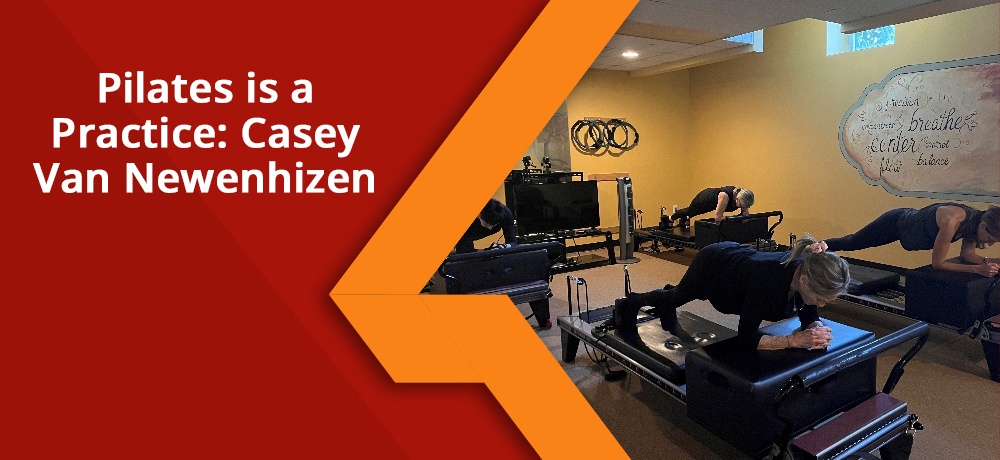
One of the aspects of Pilates that draws people in is its specificity. There’s an intention for each exercise that leads a chain of muscles to activate, which in turn builds strength, precision, and control. This process can be overwhelming at first. Some people have never moved this way or thought about how they breathe or how breath affects movement. The specifics of Pilates are a lot to learn, especially when the equipment comes into play. You practice and adapt to be more aware of your body and what is happening as you move.
Joseph Pilates said, “In 10 sessions you’ll feel the difference, in 20 sessions you’ll see the difference, and in 30 sessions you’ll have a whole new body.” Once you feel the difference in your body, you become more aware of how you move daily. You begin to think about how you sit as you drive, walk down the street, and sit up out of bed. How can these day-to-day motions be executed efficiently and correctly? Pilates can help with that.
CLICK HERE TO READ THE FULL ARTICLE »
-
Exercise Is NOT An Option But We Need Options For Exercise (The secret of feeling good)
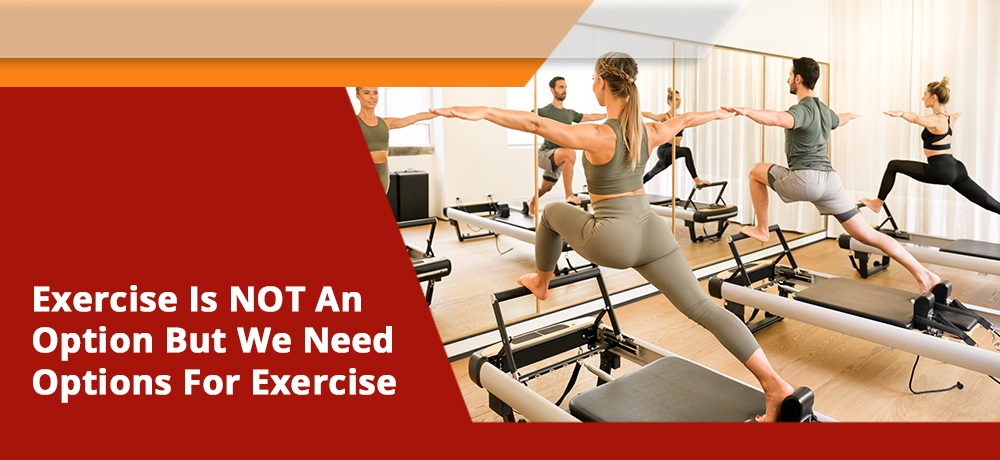
Would you forgo brushing your teeth? Would we allow our children to forgo brushing their teeth? When teaching a group of master instructors, Jonathan Hoffman* used this analogy to drive home the fundamental concept that we as humans must exercise. Movement is essential. Proper motion is lotion. Use it or lose it.
CLICK HERE TO READ THE FULL ARTICLE »
-
Mat vs Reformer Pilates: Which is Better?

Pilates is once again booming, but if someone asked you which was your favorite, Mat or Reformer, how would you answer? With about 11 million people practicing Pilates in the U.S., it’s an expected question that would arise among regulars. On the one hand, Mat Pilates is the foundation of Pilates consisting of the original 34 exercises. On the other hand, Reformer Pilates incorporates the reformer bed, which allows the control of resistance. Both are great forms of exercise that can support any weight loss program. So, aside from being a personal choice, which is actually better for you? For most Pilates fans,…
CLICK HERE TO READ THE FULL ARTICLE »
-
Stay In Touch With Pilates Core Center!

Our email newsletter is a one-stop resource for relevant news and content about Pilates Core Center, a pilates studio in Cherry Hill, New Jersey.
CLICK HERE TO READ THE FULL ARTICLE »
-
Season’s Greetings from Pilates Core Center

The Pilates Core Center team wishes you the happiest of holidays this season. May the New Year be filled with joy, health, and prosperity!
CLICK HERE TO READ THE FULL ARTICLE »
-
Top Five Things To Look For In A Pilates Instructor

Unlike other forms of exercise, Pilates develops strength, flexibility, muscular endurance, coordination, balance, and good posture with a lower risk of injury. In this discipline, correct form is emphasized rather than going for the burn. Pilates offers a variety of exercise variations and progressions, so you will rarely become bored.
CLICK HERE TO READ THE FULL ARTICLE »
-
PROPRIOCEPTION (Who’s Down with Pro PP)

Have you ever asked your Pilates instructor if you are standing in good posture or if your lower back was collapsing in a plank exercise? Have you ever had to look up to see the reformer foot bar before placing your feet on it or not able to sense if your feet are neither supinated (rolled out to the little toe) nor pronated (rolled in toward the big toe)? If you answered yes, then chances are your proprioceptive sense has not yet been honed. Let’s take a look at this “sense of self”, and why it’s important in all of our everyday movements.
CLICK HERE TO READ THE FULL ARTICLE »
-
Meet The Face Behind Pilates Core Center
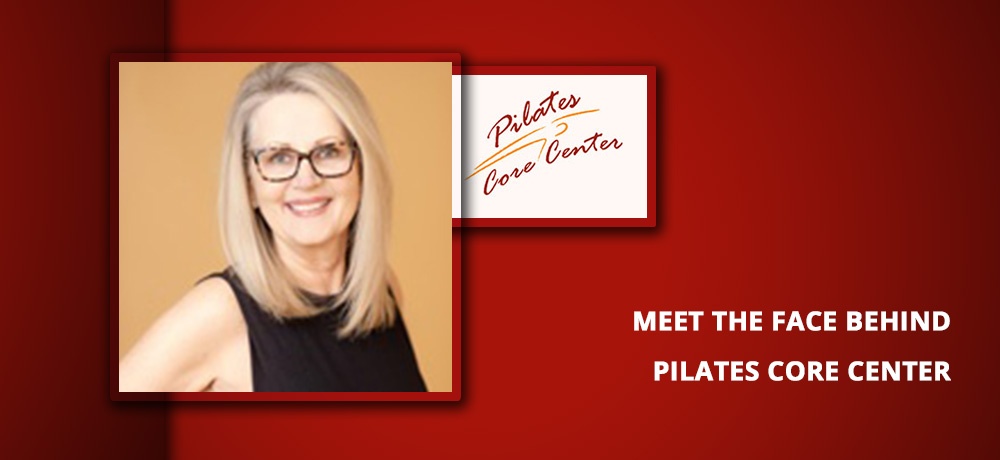
I’m Diane Grossman, the proud owner of Pilates Core Center. I look forward to sharing my story. I hope that you will enjoy getting to know me better.
CLICK HERE TO READ THE FULL ARTICLE »
-
Why You Should Choose Pilates Core Center

Whether you are looking for increased muscle strength and tone, particularly in your abdominal muscles, lower back, hips, and buttocks (the ‘core muscles’ of your body) and balanced muscular strength on both sides of your body, Pilates can help you. For enhanced muscular control of your back and limbs and improved stabilization of your spine, Pilates has been shown to have excellent benefits.
CLICK HERE TO READ THE FULL ARTICLE »
-
A Beginner’s Guide To Exercise: How To Start And Succeed

While you may have been physically fit in your youth, have you let yourself go and neglected your health and fitness recently? Are you ready to get in shape and feel your best again? Well, you need to consider a few things before you sign up and get started with a new fitness program.
CLICK HERE TO READ THE FULL ARTICLE »
-
What Makes Pilates Core Center Stand Out

Thanks for stopping by our blog. If you’re looking for more information about Pilates Core Center, you’ve come to the right place.
CLICK HERE TO READ THE FULL ARTICLE »



















